Patrick Traynor
Pitch Imperfect: Detecting Audio Deepfakes Through Acoustic Prosodic Analysis
Feb 20, 2025Abstract:Audio deepfakes are increasingly in-differentiable from organic speech, often fooling both authentication systems and human listeners. While many techniques use low-level audio features or optimization black-box model training, focusing on the features that humans use to recognize speech will likely be a more long-term robust approach to detection. We explore the use of prosody, or the high-level linguistic features of human speech (e.g., pitch, intonation, jitter) as a more foundational means of detecting audio deepfakes. We develop a detector based on six classical prosodic features and demonstrate that our model performs as well as other baseline models used by the community to detect audio deepfakes with an accuracy of 93% and an EER of 24.7%. More importantly, we demonstrate the benefits of using a linguistic features-based approach over existing models by applying an adaptive adversary using an $L_{\infty}$ norm attack against the detectors and using attention mechanisms in our training for explainability. We show that we can explain the prosodic features that have highest impact on the model's decision (Jitter, Shimmer and Mean Fundamental Frequency) and that other models are extremely susceptible to simple $L_{\infty}$ norm attacks (99.3% relative degradation in accuracy). While overall performance may be similar, we illustrate the robustness and explainability benefits to a prosody feature approach to audio deepfake detection.
Analyzing the AI Nudification Application Ecosystem
Nov 14, 2024



Abstract:Given a source image of a clothed person (an image subject), AI-based nudification applications can produce nude (undressed) images of that person. Moreover, not only do such applications exist, but there is ample evidence of the use of such applications in the real world and without the consent of an image subject. Still, despite the growing awareness of the existence of such applications and their potential to violate the rights of image subjects and cause downstream harms, there has been no systematic study of the nudification application ecosystem across multiple applications. We conduct such a study here, focusing on 20 popular and easy-to-find nudification websites. We study the positioning of these web applications (e.g., finding that most sites explicitly target the nudification of women, not all people), the features that they advertise (e.g., ranging from undressing-in-place to the rendering of image subjects in sexual positions, as well as differing user-privacy options), and their underlying monetization infrastructure (e.g., credit cards and cryptocurrencies). We believe this work will empower future, data-informed conversations -- within the scientific, technical, and policy communities -- on how to better protect individuals' rights and minimize harm in the face of modern (and future) AI-based nudification applications. Content warning: This paper includes descriptions of web applications that can be used to create synthetic non-consensual explicit AI-created imagery (SNEACI). This paper also includes an artistic rendering of a user interface for such an application.
Every Breath You Don't Take: Deepfake Speech Detection Using Breath
Apr 26, 2024Abstract:Deepfake speech represents a real and growing threat to systems and society. Many detectors have been created to aid in defense against speech deepfakes. While these detectors implement myriad methodologies, many rely on low-level fragments of the speech generation process. We hypothesize that breath, a higher-level part of speech, is a key component of natural speech and thus improper generation in deepfake speech is a performant discriminator. To evaluate this, we create a breath detector and leverage this against a custom dataset of online news article audio to discriminate between real/deepfake speech. Additionally, we make this custom dataset publicly available to facilitate comparison for future work. Applying our simple breath detector as a deepfake speech discriminator on in-the-wild samples allows for accurate classification (perfect 1.0 AUPRC and 0.0 EER on test data) across 33.6 hours of audio. We compare our model with the state-of-the-art SSL-wav2vec model and show that this complex deep learning model completely fails to classify the same in-the-wild samples (0.72 AUPRC and 0.99 EER).
Attacks as Defenses: Designing Robust Audio CAPTCHAs Using Attacks on Automatic Speech Recognition Systems
Mar 10, 2022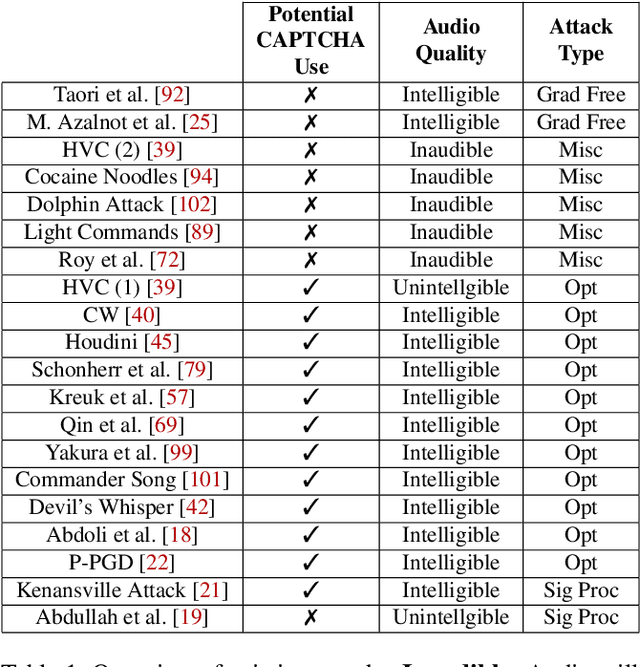
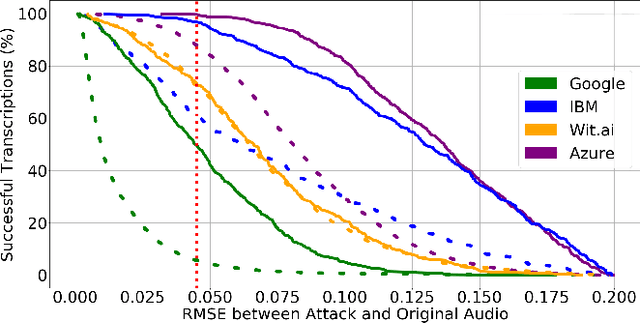

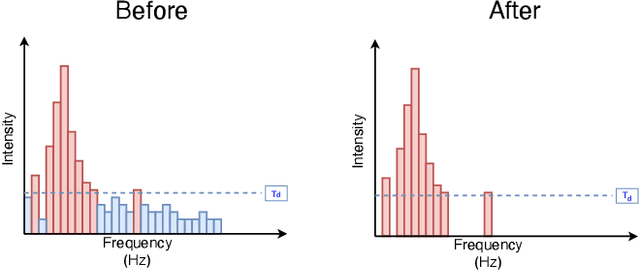
Abstract:Audio CAPTCHAs are supposed to provide a strong defense for online resources; however, advances in speech-to-text mechanisms have rendered these defenses ineffective. Audio CAPTCHAs cannot simply be abandoned, as they are specifically named by the W3C as important enablers of accessibility. Accordingly, demonstrably more robust audio CAPTCHAs are important to the future of a secure and accessible Web. We look to recent literature on attacks on speech-to-text systems for inspiration for the construction of robust, principle-driven audio defenses. We begin by comparing 20 recent attack papers, classifying and measuring their suitability to serve as the basis of new "robust to transcription" but "easy for humans to understand" CAPTCHAs. After showing that none of these attacks alone are sufficient, we propose a new mechanism that is both comparatively intelligible (evaluated through a user study) and hard to automatically transcribe (i.e., $P({\rm transcription}) = 4 \times 10^{-5}$). Finally, we demonstrate that our audio samples have a high probability of being detected as CAPTCHAs when given to speech-to-text systems ($P({\rm evasion}) = 1.77 \times 10^{-4}$). In so doing, we not only demonstrate a CAPTCHA that is approximately four orders of magnitude more difficult to crack, but that such systems can be designed based on the insights gained from attack papers using the differences between the ways that humans and computers process audio.
Beyond $L_p$ clipping: Equalization-based Psychoacoustic Attacks against ASRs
Oct 25, 2021


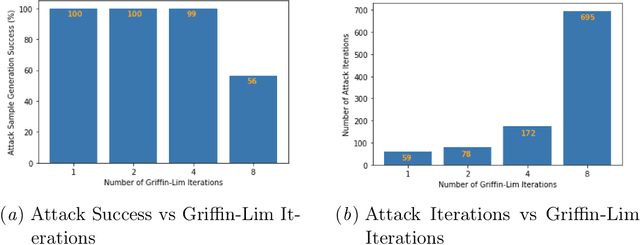
Abstract:Automatic Speech Recognition (ASR) systems convert speech into text and can be placed into two broad categories: traditional and fully end-to-end. Both types have been shown to be vulnerable to adversarial audio examples that sound benign to the human ear but force the ASR to produce malicious transcriptions. Of these attacks, only the "psychoacoustic" attacks can create examples with relatively imperceptible perturbations, as they leverage the knowledge of the human auditory system. Unfortunately, existing psychoacoustic attacks can only be applied against traditional models, and are obsolete against the newer, fully end-to-end ASRs. In this paper, we propose an equalization-based psychoacoustic attack that can exploit both traditional and fully end-to-end ASRs. We successfully demonstrate our attack against real-world ASRs that include DeepSpeech and Wav2Letter. Moreover, we employ a user study to verify that our method creates low audible distortion. Specifically, 80 of the 100 participants voted in favor of all our attack audio samples as less noisier than the existing state-of-the-art attack. Through this, we demonstrate both types of existing ASR pipelines can be exploited with minimum degradation to attack audio quality.
SoK: The Faults in our ASRs: An Overview of Attacks against Automatic Speech Recognition and Speaker Identification Systems
Jul 21, 2020
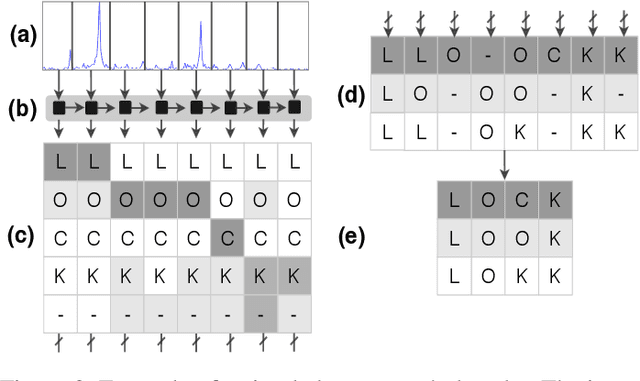
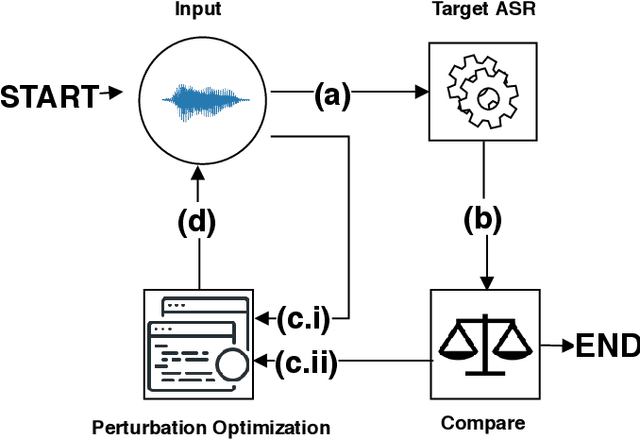
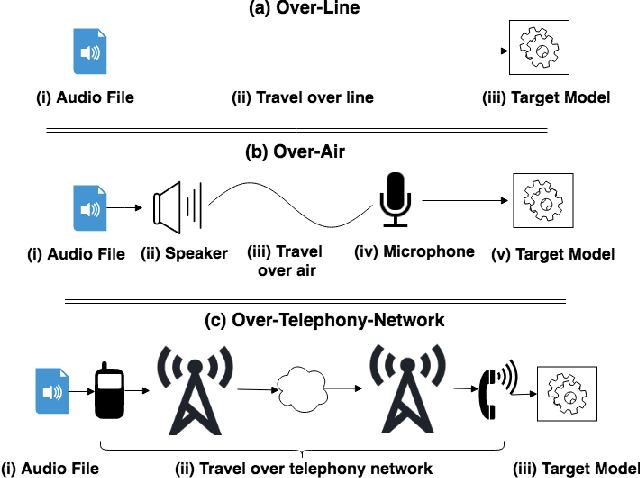
Abstract:Speech and speaker recognition systems are employed in a variety of applications, from personal assistants to telephony surveillance and biometric authentication. The wide deployment of these systems has been made possible by the improved accuracy in neural networks. Like other systems based on neural networks, recent research has demonstrated that speech and speaker recognition systems are vulnerable to attacks using manipulated inputs. However, as we demonstrate in this paper, the end-to-end architecture of speech and speaker systems and the nature of their inputs make attacks and defenses against them substantially different than those in the image space. We demonstrate this first by systematizing existing research in this space and providing a taxonomy through which the community can evaluate future work. We then demonstrate experimentally that attacks against these models almost universally fail to transfer. In so doing, we argue that substantial additional work is required to provide adequate mitigations in this space.
Hear "No Evil", See "Kenansville": Efficient and Transferable Black-Box Attacks on Speech Recognition and Voice Identification Systems
Oct 11, 2019
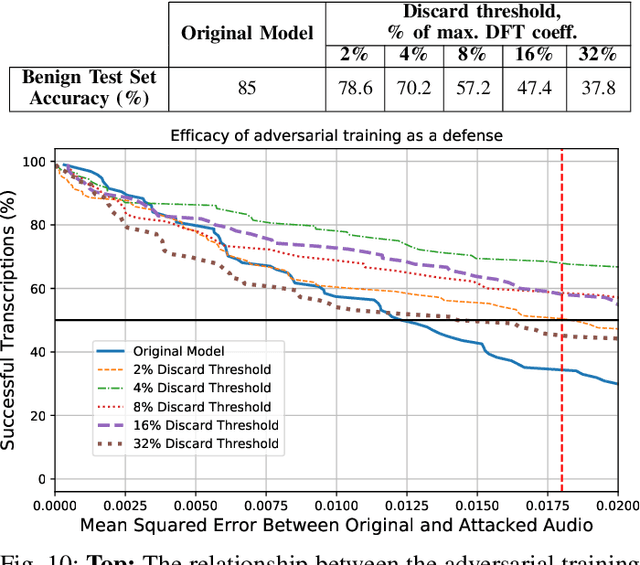
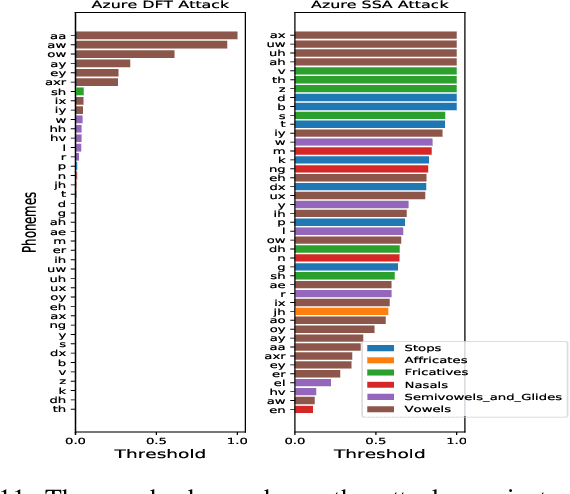
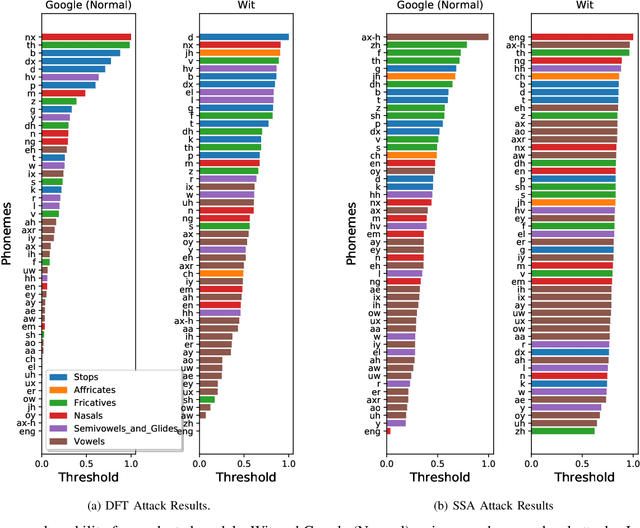
Abstract:Automatic speech recognition and voice identification systems are being deployed in a wide array of applications, from providing control mechanisms to devices lacking traditional interfaces, to the automatic transcription of conversations and authentication of users. Many of these applications have significant security and privacy considerations. We develop attacks that force mistranscription and misidentification in state of the art systems, with minimal impact on human comprehension. Processing pipelines for modern systems are comprised of signal preprocessing and feature extraction steps, whose output is fed to a machine-learned model. Prior work has focused on the models, using white-box knowledge to tailor model-specific attacks. We focus on the pipeline stages before the models, which (unlike the models) are quite similar across systems. As such, our attacks are black-box and transferable, and demonstrably achieve mistranscription and misidentification rates as high as 100% by modifying only a few frames of audio. We perform a study via Amazon Mechanical Turk demonstrating that there is no statistically significant difference between human perception of regular and perturbed audio. Our findings suggest that models may learn aspects of speech that are generally not perceived by human subjects, but that are crucial for model accuracy. We also find that certain English language phonemes (in particular, vowels) are significantly more susceptible to our attack. We show that the attacks are effective when mounted over cellular networks, where signals are subject to degradation due to transcoding, jitter, and packet loss.
Practical Hidden Voice Attacks against Speech and Speaker Recognition Systems
Mar 18, 2019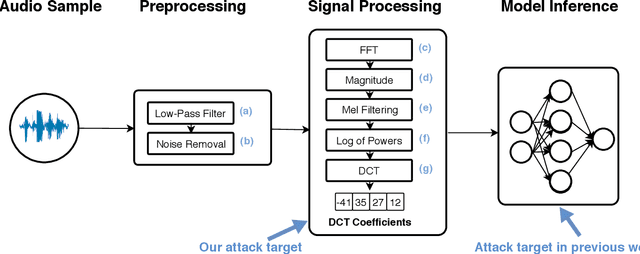
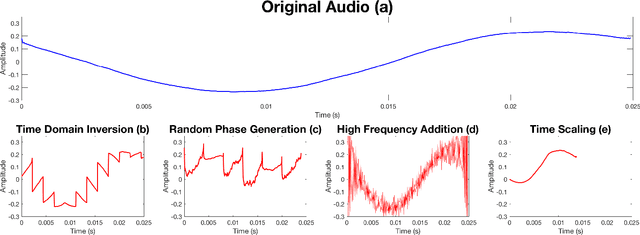
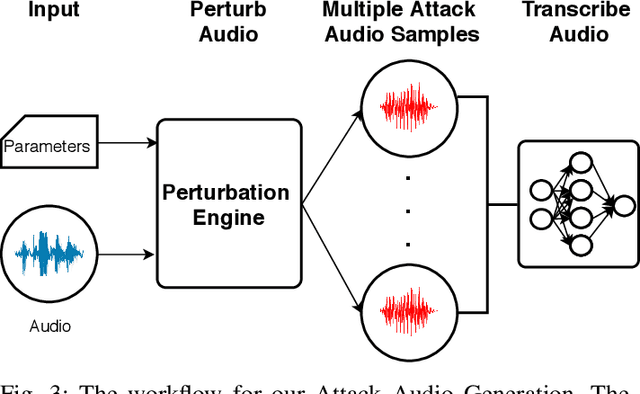
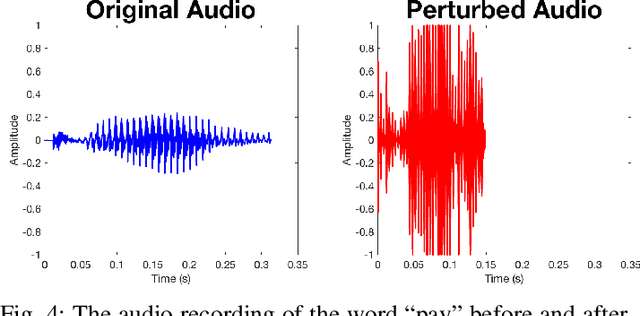
Abstract:Voice Processing Systems (VPSes), now widely deployed, have been made significantly more accurate through the application of recent advances in machine learning. However, adversarial machine learning has similarly advanced and has been used to demonstrate that VPSes are vulnerable to the injection of hidden commands - audio obscured by noise that is correctly recognized by a VPS but not by human beings. Such attacks, though, are often highly dependent on white-box knowledge of a specific machine learning model and limited to specific microphones and speakers, making their use across different acoustic hardware platforms (and thus their practicality) limited. In this paper, we break these dependencies and make hidden command attacks more practical through model-agnostic (blackbox) attacks, which exploit knowledge of the signal processing algorithms commonly used by VPSes to generate the data fed into machine learning systems. Specifically, we exploit the fact that multiple source audio samples have similar feature vectors when transformed by acoustic feature extraction algorithms (e.g., FFTs). We develop four classes of perturbations that create unintelligible audio and test them against 12 machine learning models, including 7 proprietary models (e.g., Google Speech API, Bing Speech API, IBM Speech API, Azure Speaker API, etc), and demonstrate successful attacks against all targets. Moreover, we successfully use our maliciously generated audio samples in multiple hardware configurations, demonstrating effectiveness across both models and real systems. In so doing, we demonstrate that domain-specific knowledge of audio signal processing represents a practical means of generating successful hidden voice command attacks.
 Add to Chrome
Add to Chrome Add to Firefox
Add to Firefox Add to Edge
Add to Edge